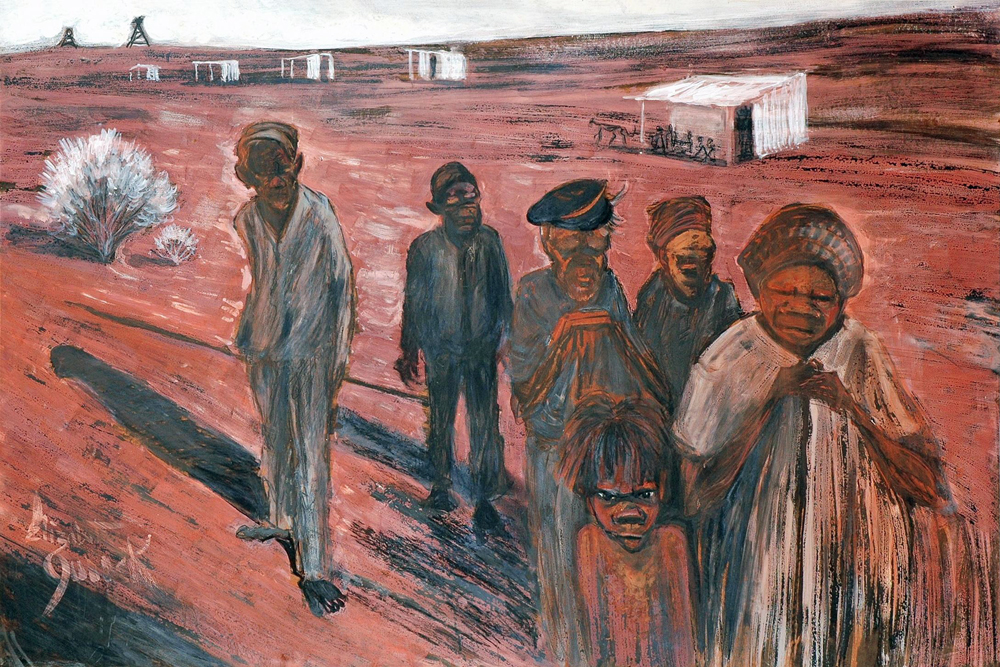Applicable to the Eastern Goldfields paintings are extracts from disparate sources below:
Essentially
and in the final analysis, pictures exist in their own right, through
and by reason of their own vitality and according to a set of laws,
beyond, I believe, full explanation. The pictures that are
living today and that have passed into the fabric of our minds do so
of their own power, speaking through the confusion of words
elucidating them, and in spite of, not because of, the “explanations”
by some thought necessary. Words become a prop that is leant on
heavily to see back into the picture that which is already there for
the looking ...
extract from Signature — a
personal, c. 3000 word, reflection by Elizabeth Durack, from Ivanhoe
Station, East Kimberley, Western Australia, August
1948.
***
... were I to write no more than one story about Australia
it would be about Elizabeth Durack’s paintings ... Is she aware of
the power of her work? I don’t know. Most likely she is the captive
of her own experience ... I marvelled at the passionate civil spirit
that talent can put into a work of art ...
extract from:
’In an Artist’s Studio’ by Russian writer Daniel Granin in New
Times — A Weekly Journal of World Affairs#42 Pushkin Sq Moscow
USSR October 20 1965.
***
Melbourne critics had ignored these paintings when first
exhibited at the Athenaeum Gallery in Collins Street in June
1961.
The following year when exhibited at the Terry Clune
Galleries in Sydney the leading Sydney Morning Herald critic wrote:
... these works cannot escape the taint of the “quaint” ...
they are shallow story-telling instead of being deeply
evocative.
***
and from: 'The resilience of the long-distance artist' —
From
the time of her first exhibition in 1946 various members of the then rather ill-defined 'left', had been
ready to embrace Elizabeth Durack but never was she inclined to
return the affection.
Had she been so inclined would she have found a more secure position in the pantheon of Australian Art?
The answer remains open. As it was, while ever ready to break rules — social and artistic — she stopped
short at the vital one of manipulating her work — or of having it
manipulated — for political purposes.
Such an avowedly noble and detached
stand did not inhibit a keen, often passionate, interest in politics or from alluding to contemporary events through her art ...
extract from a work in progress by HJ Madden, assistant curator to the estate of Elizabeth Durack, 2009.

